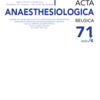Case Report : Severe Hypernatremia following treatment for Hyperosmolar Hyperglycaemic State : A pragmatic approach used to manage hypernatremia
Hyperosmolar Hyperglycaemia State (HHS) ; hypernatremia ; IV hypotonic fluid ; nasogastric (NG) free water
Published online: Mar 08 2022
Abstract
The Hyperosmolar Hyperglycaemia State (HHS) is an endocrine emergency with a mortality rate between 10 and 50%. The mainstay for the treatment of this condition is vigorous IV fluid replacement with close monitoring of blood glucose, serum osmolality, and electrolytes. However, after initial resuscitation, patients can develop hypernatremia and raised serum osmolality, which have deleterious consequences. While hypernatremia in HHS can be treated with infusions of 0.45% saline or 5% dextrose, alternate measures such as intravenous (IV) hypotonic fluid infusion [e.g. 0.18% sodium chloride (NaCl) containing 4% dextrose and 0.15% potassium chloride (KCl)], or free water administration through a nasogastric (NG) tube can be used. We report the case of a 70-year-old man, who was initially admitted to a medical high care ward (MHC) with HHS, and was transferred to the ICU 72 hours later with an altered level of consciousness and severe hypernatremia. His treatment consisted in an IV hypotonic 0.18% NaCl infusion containing 4% dextrose and 0.15% KCl. He also received free water through a NG tube at a rate that was calculated to correct natremia at an average rate of 0.55 meq L-1 hr-1 over 72 hours. A multipronged approach was instituted to manage this patient, including, in addition to natremia correction, blood glucose control with insulin, appropriate IV antibiotics to treat infected foot ulcers, adequate analgesic medications, low-molecular-weight- heparin (LMWH) for thromboprophylaxis, proton- pump inhibitors, and continuation of patient’s ongoing antidepressant drugs at the time of his Glasgow Coma Score improvement. This case report demonstrates the feasibility and success of IV hypotonic fluid (0.18% NaCl - 4% dextrose - 0.15% KCl), alongside NG free water for correcting sodium levels with lower fluid volumes than would have been otherwise required if corrected with 0.45% saline. This treatment seems to be a reasonable choice for correcting sodium levels and osmolality in HHS patients who present with hypernatremia after an initial resuscitation, insofar as it avoids fluid overload and provides dextrose as an energy substrate, in addition to potassium ions. However, while correcting natremia with hypotonic fluid, other aspects of management should not be ignored.
